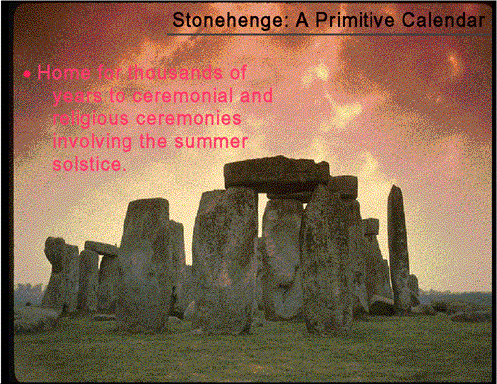From the caves and the forests, man slowly evolved and built structures such
as Stonehenge. Stonehenge, which lies 13km north of Salisbury, England, is
believed to have been an ancient form of calendar designed to capture the
light from the summer solstice in a specific fashion. The solstices have
long been special days for various religious groups and cults. Archeologists
and anthropologists today are not quite certain how the structure, believed to
have been built about 2800 B.C., came to be erected since the technology
required to join together the giant stones and raise them upright seems to be
beyond the technological level of the Britons at the time. It is widely
believed that the enormous edifice of stone may have been erected by
the Druids. Regardless of the identity of the builders, it remains today
a monument to man's intense desire to count and to track the occurrences of
the physical world around him.
Computers: From the Past to the Present
Stonehenge: A Primitive Calculator:
Last modified July 30, 2006
©1994-2006 by Michelle A. Hoyle
